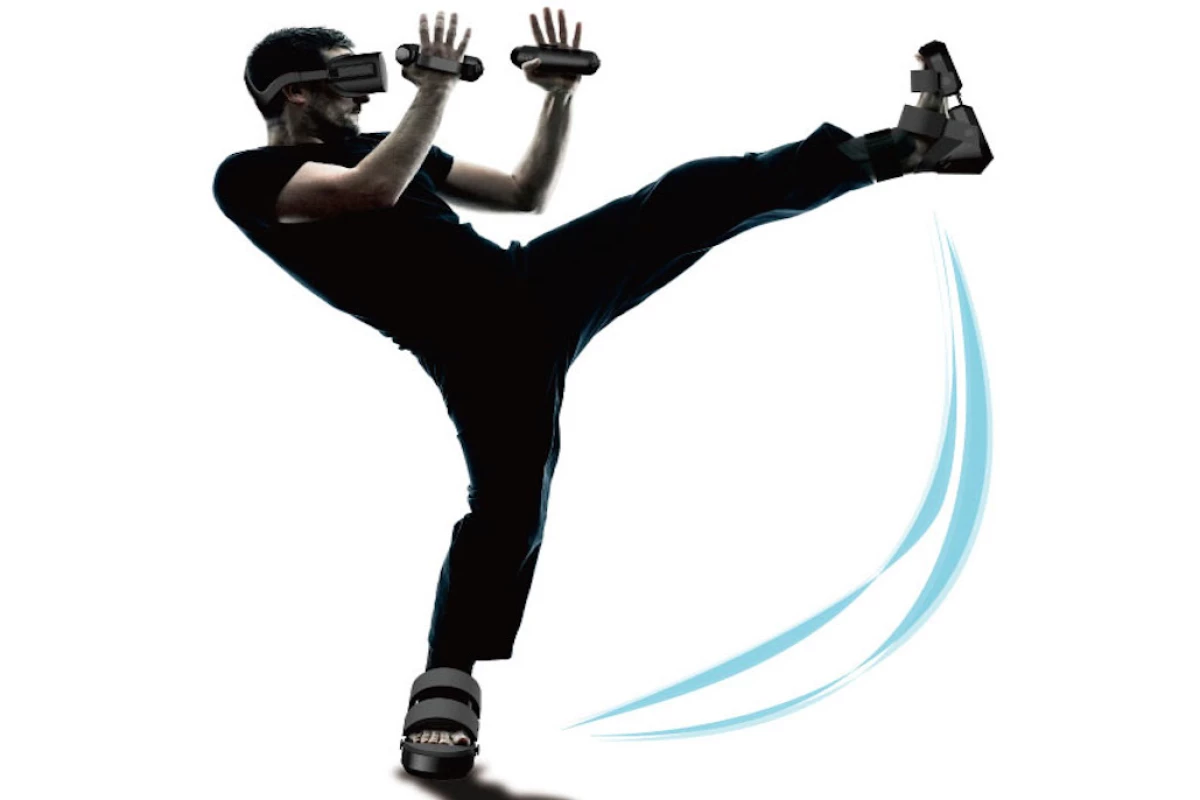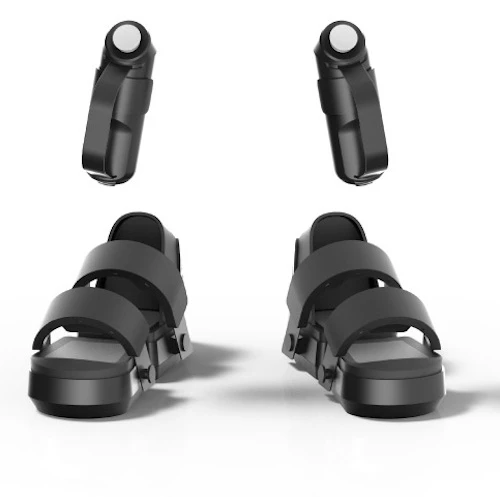Though Vive's wands, the Oculus Touch controllers, and to a far lesser extent, the PSVR's Move wands, do a reasonable job of bringing hands into VR worlds, feet are another story. Soon, we may be able to, almost literally, step into the shoes of our VR avatars with Cerevo's Taclim, a set of motion-sensing, haptic gloves and shoes.
At a glance, "gloves" might not be the right word for the handheld devices, but it's how Cerevo is describing them. They look more like handles that sit against your palms, where they register movements through a 9-axis sensor and generate haptic feedback from a 1.4-inch (3.6 cm) tactile motor.
The goofy-looking Taclim shoes are the bigger draw, tracking the movement of the player's feet through the same kinds of sensors, including an accelerometer, gyroscope and a geomagnetic sensor. There are three haptic motors in each shoe – one in the heel, one under the ball of the foot and another in the top strap near the toes. With one in each hand, that makes eight in total.
With those feedback points, Cerevo claims the shoes can recreate the feeling of walking on different surfaces. Snow or sand will crunch underfoot, while wooden or concrete floors will have a lot less give, and kicking an enemy in the stomach should feel much squishier than if your foot hits their shield. For software developers, the corresponding vibration patterns will be available through a Unity plugin, and unique ones can be created by importing .wav file formats.
In an ideal world, those boots could help solve a few of VR's mobility issues. Room-scale environments can be amazingly immersive, but the experience kind of falls over as soon as you try to explore beyond that small portion of the virtual world. Too many VR games rely on the crutch of teleportation to move players from place to place.
And hardware fixes like the Virtuix Omni treadmill are cumbersome solutions that don't really help much anyway. The AxonVR suit looks more promising, with its all-over haptics and ability to recreate temperature and texture, but its bulk is made to be set up permanently in an arcade or theme park.
Taclim looks portable enough for a somewhat practical home setup, but we can't imagine walking on the spot in those heels would encourage a natural gait. Maybe the best bet is to wait for someone to strap HTC's new Vive Trackers to a pair of slippers.
The Taclim components talk to each other through either Bluetooth Low-Energy or the sub-GHz wireless band, and Cerevo says the system can be recharged in three hours – although it doesn't say how long the battery lasts on a charge. Likewise, there's no word on pricing or availability just yet.
Source: Cerevo






